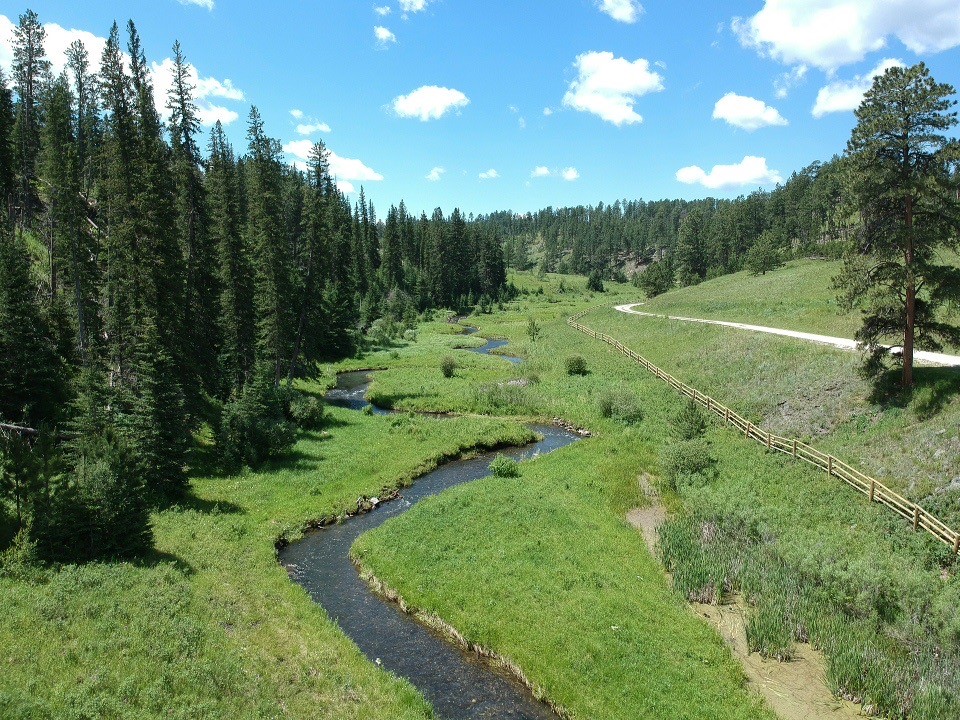RMEF has a long conservation history in South Dakota, dating back to 1990. Here are three recent examples of how RMEF funds are being used in the Mount Rushmore State!
Why are approximately 4,500 people across South Dakota members of the Rocky Mountain Elk Foundation? Because they support its mission of ensuring the future of elk, other wildlife, their habitat and our hunting heritage. How do they show that support? One of the ways is by attending big game banquets that generate dollars which are put back on the ground in the Mount Rushmore State. Below are three recent examples of how the funding is used.
Hardy Pipeline
In 2022, crews finished the Hardy Cooperative Water Pipeline Project, a four-year cooperative effort stretching from western South Dakota into northeast Wyoming that supplies water for elk, mule deer, wild turkey and other wildlife in the Black Hills National Forest. The pipeline covers nine miles and utilizes a solar system, spring box, four stock tanks, two storage tanks and supplies life-sustaining water for two grazing allotments in the two states. Click here to watch a video about it.
Castle Creek Riparian Fencing
In 2023, workers built a 1.5 mile-long, three-rail wood fence complete with two angler access gates along a portion of Castle Creek (see photo at top of post) near Deerfield Reservoir on the Black Hills National Forest. The fence keeps cattle from accessing the creek, thus protecting and enhancing an important riparian area. The collaborative construction project will be followed up with supplemental willow plantings in 2024.

2023 Conservation Funding
In 2023, RMEF announced the allocation of more than $1.45 million in grant funding for 25 projects across 16 counties and two others with statewide impact. RMEF committed $295,123 that helped leverage $1,163,717 in partner dollars. Project examples include funding for chronic wasting research, support for the Elk Hunter Access Program that creates public access for hunters on public and private lands, invasive weed treatments and support for more than a dozen youth recreational shooting and conservation projects.
“We would not have this funding for all these projects if it weren’t for our volunteers. They are the ones who gave of their time to plan and execute RMEF banquets across the state. They are rock stars,” said Mason Cooper, RMEF regional director for eastern South Dakota and Nebraska.
“Not only are they the backbone of our fundraising but a couple dozen of them took part in our annual South Dakota Rendezvous, where we repaired old wildlife water guzzlers, removed eight and a half miles of old fencing, old scrap iron as well as encroaching conifers from elk habitat in the Black Hills,” said Sam Silacci, RMEF regional director for western portions of South Dakota and Nebraska.
RMEF has a long conservation history in South Dakota, dating back to 1990, RMEF and its partners completed 432 conservation and hunting heritage outreach projects in the state with a combined value of more than $47.4 million. These projects conserved or enhanced 128,659 acres of habitat and opened or improved public access to 11,711 acres.

